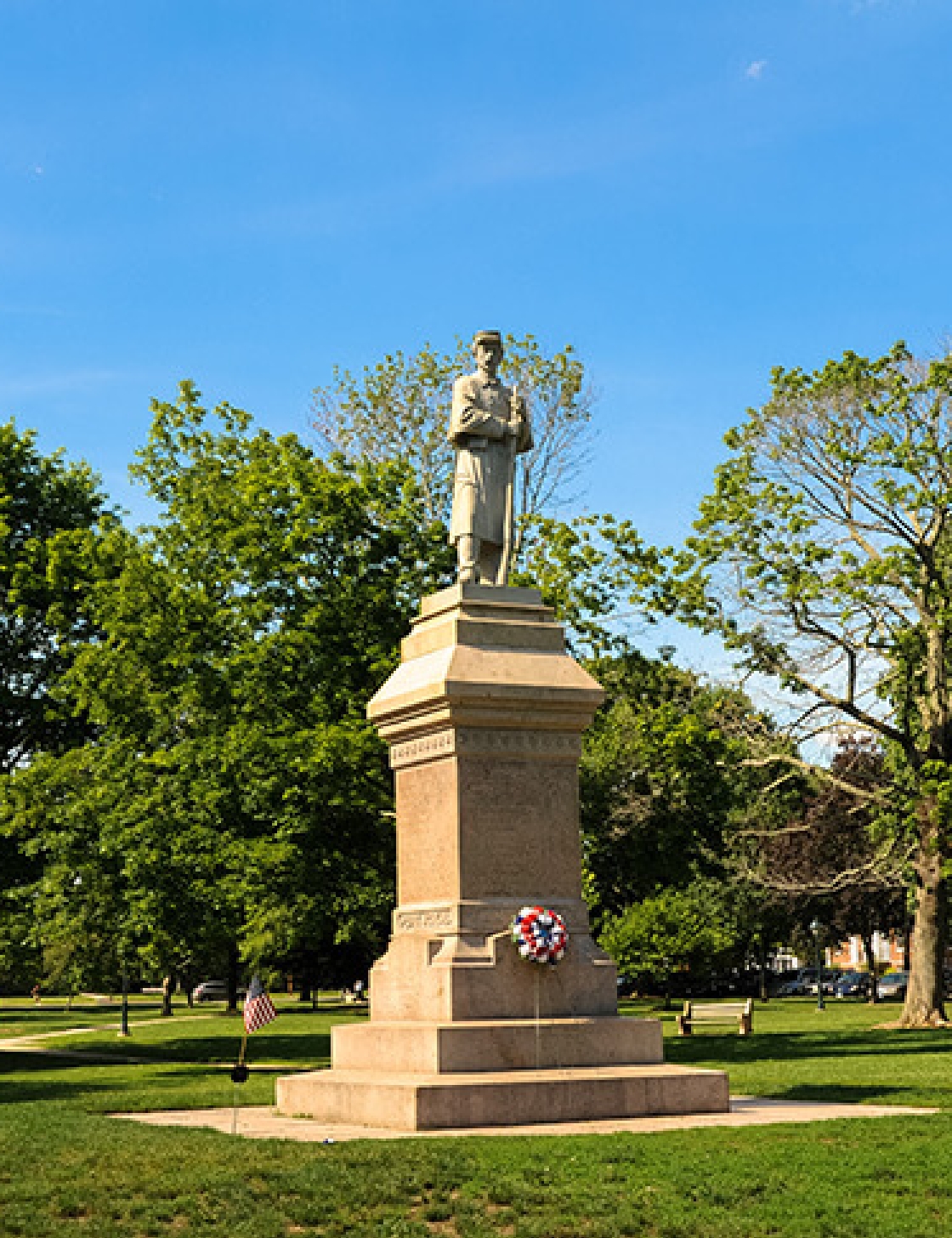Welcome to the Historic Guilford presentation of Homes of
Civil War Soldiers.
The 10-mile loop, taking approximately 45 minutes, will pass by over 50
locations where soldiers resided before and after the war.
21 Whitfield Street
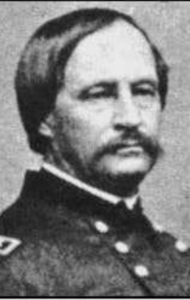
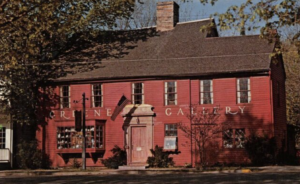
William Todd Seward lived here in 1860.
William was commissioned as 2nd Lieutenant in the 1st CT Light Artillery
and then commissioned as Captain in the 7th CT Infantry. He later served
in the US Volunteers Commissary Department until July 1865, serving
almost 4 years total.
15 Whitfield Street
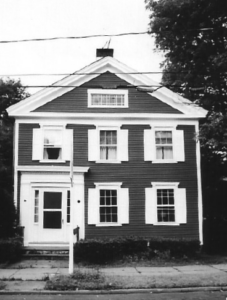
Abraham B. Fowler lived at 15 Whitfield Street. He was a moulder, and
his father George was an apothecary who owned a drugstore at #17
Whitfield Street. Abraham served in the 1st CT Light Artillery for almost
two years.
86 Water Street
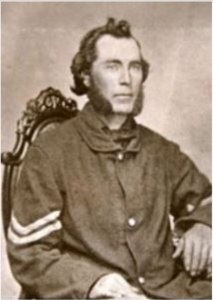
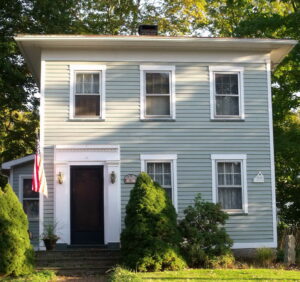
John Norton, built this house. John, a blacksmith in town, married
Lucinda Leete and had 3 children. He moved to Middletown, CT where
he was a respected member of that community prior to enlisting in
Co. I, 21st Regiment, CT Infantry.
During the long and weary march to Falmouth, Virginia, which began on
October 28, 1862, the men were exposed to the elements without shelter.
Many of them became sick with typhoid fever, John Norton one of them.
He died on Christmas day 1862 at the Regimental Hospital in Falmouth,
Virginia.
39 Boston Street
Samuel B. Dunn lived at 39 Boston Street with his parents and his
great uncle, Zenas Bradley, who owned the home. Samuel was a joiner, a
carpenter who joins pieces of wood without the use of nails. He married
and moved to Derby, CT prior to enlisting as a Corporal in Co. K, 13th
Regiment, Connecticut Infantry.
The regiment, raised under the name “The Knowlton Rifles” became
known as a fighting company, rarely missing an opportunity to distinguish
itself. The regiment fought mostly in Louisiana where Dunn was promoted
twice. On September 19, 1864, the army was on the Winchester, Virginia
side of the Opequon Creek (Virginia) and engaged the Rebels.
Dunn, the brave and faithful First sergeant was struck, his hands torn by
grapeshot. He held up his mangled hands and Major Homer B. Sprague
threw a cord around them to form a compress. Badly wounded Sergeant
Dunn was taken to Jarvis, USA military hospital, Baltimore, Maryland,
where he received treatment for his wounds. He died a couple of weeks
later from bacteria in the bloodstream.
Boston Street
Boston Street can claim to be one of the most patriotic streets in town,
sending a high number of its residents to fight for the Union.
One family that lived on Boston Street was the Fowler family. Samuel
Fowler and 3 of his sons served. His oldest son, Thomas, enlisted at the
beginning of the war and fought at the first Battle of Bull Run. Since the war
was thought to only last 90 days, this regiment was in service for only 3
months. Thomas reenlisted in Co. A, 10th CT Infantry and was promoted.
Another son, Wallace, who was only sixteen at the time, enlisted in
Company B, 16th CT Infantry. He was captured in battle at Plymouth, North
Carolina and sent to Andersonville Prison. He survived.
A third son, Emerson, was only 14 at the time, and too young to enlist.
Instead, he served as an officers’ waiter in the 27th Regiment, the same
as his father.
Samuel, the father, was wounded in the knee at the Battle of
Fredericksburg on December 13, 1862 and sent to the College General
Hospital in Georgetown. While the father was receiving care for his wound,
Emerson, the youngest, took sick and died from Typhoid Fever on
Christmas Day 1862. Samuel, the father, died just 15 days later from his
wounds. Others who lived on Boston Street included Richard L. Hull who
was killed at the Battle of Antietam on September 17, 1862 and John R.
Burgiss who died from malignant fever while at Shrewsbury, Louisiana.
60 Boston Post Road
The next house is near the Guilford/Madison town line. Lewis Blatchley
lived at 60 Boston Post Road. He enlisted in Co. G, 15th CT Infantry and
was killed in action at the Battle of Wyse Forks in Kinston, North Carolina
on March 8, 1865.
The Battle of Wyse Forks, also known as Second Kinston, occurred
between March 7 and 10, 1865. The highest number of casualties for
Guilford during any single engagement occurred on March 8, 1865, when,
while briskly engaged, the regiment was enveloped by a division of the
enemy who had gained their rear. Two Guilford soldiers were killed and
eleven were captured.
34 East River Road
The Grosvenor family from England lived in this home. Three brothers
served for Guilford, two of whom we can verify lived in the house. The
other, Joseph, lived at 48 State Street. The two brothers who lived here
were Daniel and Samuel. Daniel was one of several Guilford men to enlist
as a musician in the 1st Regiment, New York Volunteers Band. He was
discharged and later became a blacksmith living at 17 East River Road.
Samuel, the third brother was wounded at the Battle of Antietam in 1862,
captured at the battle at Plymouth, North Carolina in 1864, sent to
Andersonville Prison in Georgia and then Florence Prison in South
Carolina where he suffered even more severely. After 232 days of
imprisonment, he was paroled. He was granted a furlough and was able to
spend Christmas 1864 with his family who had by then moved to 384
Clapboard Hill Road.
After his furlough he returned to service. This unlucky fellow was aboard
the Black Diamond, a picket barge, when the Massachusetts, a Union
steamer, collided with it on the Potomac River just off Blackstone Island,
Maryland, on April 25, 1865 at 12:30 a.m. The Black Diamond sunk in 3
minutes and Grosvenor drowned. T.M. Jacobs, who is on the Guilford
Green today, used the 1864 diary of Samuel Grosvenor to write a book
entitled Almost Home, which is available for sale.
58 East River Road
Two soldiers who died and are listed on the Soldiers’ Monument lived at
58 East River Road. Oliver Evarts lived here in 1850 with the family of
Raphael Ward Benton. Both of them enlisted in Company I, 14th Regiment,
CT Infantry.
Raphael Ward Benton, Ward as he was called, was wounded in the neck
at the Battle of Antietam on September 17, 1862. In the days following the
battle Ward suffered in a field hospital, eventually walking over 20 miles
with other wounded soldiers seeking help. At the hospital in Frederick,
Maryland, eight days after the battle, he died due to blood loss, fatigue,
and improper care. His body was returned to Guilford and buried in
Alderbrook Cemetery. The Guilford Free Library holds a collection of his
letters sent to his wife during his brief service in 1862. His descendants
who had settled in Minnesota donated them in 1981 to the Guilford
Keeping Society.
Oliver Evarts was present at battle at Chancellorsville, Virginia when on the
morning of May 3, 1863, the 14th Regiment was located just north and
west of the Chancellor House, where the enemy appeared on their front
and right flank almost simultaneously. Oliver Evarts was killed in action.
African Americans, American Indian and a Horse Thief:
The 1860 census showed that Guilford had a population of 2,624,
including 23 blacks and 26 mulattos.
Twenty-one of the African Americans enlisted in the Civil War to help meet
the town’s quota. One of these, William Henry Wright, who was born in
Guilford traveled to Massachusetts to enlist in the 55th Regiment,
Massachusetts Infantry (Colored) because enlistment in Connecticut had
not yet opened up to African Americans. The monument misrepresents his
unit as the 54th Massachusetts Regiment, the unit heralded by the movie
“Glory” in the late 80s.
Three other African Americans who served were married and had families
in town.
Abraham Jackson and Jacob Thompson enlisted in the 29th Regiment,
Connecticut Infantry (Colored), and William H. Porter, upon being drafted,
served in the 11th Regiment, U.S. Colored Heavy Artillery.
The other 17 African Americans who helped fill Guilford’s quota enlisted at
the conscript camp in New Haven, serving in the 29th Regiment,
Connecticut Infantry (Colored) and the 30th Regiment, Connecticut
Infantry (Colored). The 30th Regiment failed to organize and was
absorbed into the 31st Regiment, U.S. Colored Troops.
Six of the 21 African American men died during the Civil War, including the
four who are listed on the monument. William Henry Wright died from
tuberculosis and Abraham Jackson from dysentery.
Alexander Peterson and Toby Trout were both wounded at the Battle of
the Crater (Petersburg, Va.) and died at L’Ouverture Hospital (Alexandria,
Va.). Alexander Cunningham, who accidentally shot himself at the
conscript camp in New Haven, and Josiah Cozens, who died while on
furlough, were added to the monument in 2015.
Guilford also had an American Indian who helped fill Guilford’s quota.
Lyman Lawrence, half Pequot, half Narragansett Indian, served in the 29th
CT Infantry (colored) and was wounded at the Battle of Chaffin’s Farm. He
survived and later moved to Clinton, CT where he operated a laundry
wagon.
And we have Elijah Saunders who stole a team of horses from Guilford.
He was tracked down in New York and brought back to Guilford where he
was offered the option of going to jail or enlist “for” Guilford.
He took the offer to enlist for Guilford, pocketed the bounty money that
came with the enlistment and then deserted shortly thereafter.
111 Goose Lane
Prior to the Civil War, the town played an active role in the Connecticut
Freedom trail. George Bartlett, a strong abolitionist, is reported to have
housed runaway slaves in his cellar here at 111 Goose Lane. His son,
William Nelson Bartlett, nicknamed “Willie” enlisted just after his
eighteenth birthday and fought in several battles.
At the battle at Morton’s Ford, Virginia, the men engaged in hand-to-hand
fighting in the dark. And, throughout the Wilderness campaign, the
regiment fought at five battles, daily losing valuable officers and enlisted
men. During the battle on August 15,1864, at Deep Bottom in Virginia,
Willie was shot through the heart. His body was brought back home and
buried in Alderbrook Cemetery.
829 Goose Lane
George Augustus Foote, Jr., first cousin to Harriet Beecher Stowe, was
among the first of Guilford men to enlist in April 1861, and fought at
the Battle of Bull Run, Virginia before being honorably
discharged in August 1861. He reenlisted a year later, as a Private,
Company I, 14th Regiment, Connecticut Infantry and was promoted to
Sergeant. This house was also the home of Harriet’s mother’s family who
cared for her here after her mother’s death when Harriet was 4 years old.
At the Battle of Antietam, Maryland, when the company became somewhat
disorganized, Captain Bronson called the men to form around “old Foote’s
musket,” which so amused the men that they cheered and quickly formed
again. On the same day, the flag fell and Foote volunteered to carry it for
the rest of the day.
During the Battle of Fredericksburg, Virginia, at Marye’s Heights, the flag
fell again. As Foote stopped to pick it up, he was wounded in the leg and
fell. He was again shot by the Rebels, wounding him slightly in the head
and the hip. He laid on the field the rest of the day; three times the men
charged over him, trampling on his wounded leg. Half delirious, he begged
them to kill him to end his suffering. At night, he managed to crawl off to a
little hut where some other wounded men had hung a yellow flag.
They remained there for three days with little hard tack, and still less water,
when they were discovered by a Rebel officer and a few men who asked
them why they were there. Some of the men said they didn’t want to fight
but were drafted and obliged to. Foote, on the other hand, cooly lifted his
head and said “I came to fight Rebels, and I have found them, and if ever I
get well, I will come back and fight them again.”
“Bully for you,” said the officer, “you are a boy that I like,” and at once gave
him some water out of his own canteen, sent one of his men for some
more water, washed his leg and foot, bound it up as well as he could,
paroled him, and helped him cross the river to the Lacy House, a hospital.
The men gave him a blanket, and even cheered him as the wagon drove
off.
George’s leg was hastily amputated at the Lacy House, and he was moved
to the Armory Square Hospital, where his leg was operated on again and
the bone cut shorter.
His brother went south to tend to him and bring him home. George
recovered some portion of his strength and was offered commission as
2d Lieutenant, but never mustered in, and was discharged as a Sergeant
on July 31, 1863.
After regaining some health he attempted to once again farm, but had to
give that up. He entered the mercantile business for a year, but had to give
that up as well. After a cold brought on conditions of consumption, he went
to Florida hoping to improve his health, but long suffering had shattered his
health, and he gradually declined until his death on November 14, 1869.
605 Nut Plains Road
Joel C. Parmelee was born at and lived in the family ancestral home at 605
Nut Plains Road, Guilford. He was married and had 5 children; four
daughters and a son he named Edward Lincoln.
Joel, age 40, enlisted as a Private in Company C, 27th Regiment,
Connecticut Infantry and was killed in action at the Battle of
Fredericksburg, Maryland, on December 13, 1862. His cousin, Uriah N.
Parmelee lived at 652 Nut Plains Road.
652 Nut Plains Road
A direct descendant of John Parmelee (original planter of Guilford), Uriah
Parmelee, dropped out of Yale College to enlist stating: “what is knowledge
worth to me without a country.” He was promoted for “gallant conduct at
Chancellorsville and Gettysburg.”
While pursuing the Confederates at Five Forks, Virginia, outside of
Petersburg, an enemy regiment was spotted in an orchard.
Thinking the Confederates were unsupported, the 1st Connecticut Cavalry
charged in at a gallop, but as soon as they reached the outer edge of the
woods, the peaceful looking peach orchard assumed a different character;
the bright pink blossoms were blown into the air by bullets, shells, canister
and grapeshot. Every man who had gone into the open field was shot
down. Uriah Nelson Parmelee was instantly killed by a shell to his chest,
just 8 days before the war ended.
Uriah’s words and ideas about slavery, the war, and Civil War politics can
be found in his extensive letters and journals that are used by historians
today to help us understand the war and its soldiers.
959 Nut Plains Road
Brothers George H. Hall and Charles A. Hall along with their brother inlaw,
Joseph Coan, lived at 959 Nut Plains Road. All three enlisted in Co. E,
15th CT Infantry. George was discharged due to disability after serving 6
months. Charles served for almost 3 years.
Their brother inlaw, Joseph Coan, served just 91 days. When Joseph,
while on duty as a company cook became sick with typhoid fever, his twin
brother Jerome, also in the same regiment, was allowed to take care of
him. Jerome remained with him until Joseph’s death on November 7,
1862. Joseph’s remains were sent home and his brother was allowed a
furlough to attend the funeral. Joseph left a wife and 5 yearold
daughter.
In 1860, Guilford had a population of 2,101, occupying 421 households.
These included 23 blacks and 26 mulattos. North Guilford had a total white
population of 523, occupying 111 households.
Between the years 1861 and 1865, the United States was engaged in the
Civil War, the deadliest war in American history. Guilford did its duty,
providing men, supplies and support. The Town sent hundreds of its men
off to the war; sons, fathers, brothers, uncles, cousins and neighbors.
Many of these loved ones did not return and their sacrifices have been
memorialized on the Civil War monument that stands proudly in the center
of the Guilford Green
During the war, Guilford held special town meetings to defend and
maintain the national government “at every hazard and to the last
extremity.” Support and care for the soldiers and their families were
appropriated in town resolutions. Liberty poles were erected in Guilford
and North Guilford. Citizens worked to provide what they could, sending
linens, blankets, mittens, jellies, fruits, pickles and turkeys to their soldiers.
Newspaper subscriptions were sent to the men by members of the Third
Congregational or Abolitionist Church, and a chapel tent was sent to the
soldiers in the 1st Connecticut Light Artillery Battery who had formed a
religious society in their camp. Some of Guilford’s women traveled south
to the camps and battles to tend the wounded and dying and bring about
changes in sanitary conditions.
Even though the majority of citizens supported the war, Guilford had its
share of Copperheads and those who opposed it and wanted a peace
settlement with the Confederates. On August 18, 1861, a Confederate flag
was raised in North Guilford, in exultation over the Federal defeat at Bull
Run. Rebel sympathizers also organized a plan to tar and feather their enemy,
Captain, later General Joseph Hawley, when he visited his wife,
Harriet Ward Foote Hawley’s family in Guilford.
655 Little Meadow Road
George Stevens lived at 655 Little Meadow Road prior to 1860. He
enlisted in the 1st CT Light Artillery before transferring to the Navy.
The Bullard family bought the home around 1860 where Henry B. Bullard
lived with his mother before enlisting in the 1st CT Light Artillery on
October 16, 1861. The men trained at Camp Tyler, West Meriden, Connecticut,
before leaving the state three months later.
Henry Bullard died just 24 days later while on board the Ellwood Walter.
His comrades buried Henry under some giant yellow pines just outside
Beaufort, South Carolina. He was later reinterred in the National Cemetery,
Beaufort, South Carolina. A headstone for him is also located in the Nut
Plains Cemetery. He was the first soldier from Guilford to die.
215 State Street
Samuel H. Hull was injured by a horse falling on him while on drill at
Beaufort, South Carolina. He was discharged from service on April 22, 1863,
after having been ill with chronic diarrhea for over six months. He returned
to Guilford where he died from consumption or Tuberculosis on February 1, 1876.
He is the last soldier to die who is listed on the Soldiers’ Monument.
93 State Street
93 State Street was built in 1865 and used by the Guilford Light Battery,
veterans of the Civil War as a National Guard building until 1885. This
house originally stood at the southwest corner of 89 State Street and
moved to this location in 1903.
48 State Street
Joseph Grosvenor was an apprentice carriage maker who lived with
Samuel Stone, a master carriagemaker. Joseph was one of two Guilford
soldiers who were killed in action at the Battle of Antietam on September
17, 1862. He is buried at the National Cemetery in Sharpsburg, MD.
17 Graves Avenue
Henry Harrison Hall was an apprentice blacksmith who lived here with John
Graves, a master blacksmith. Henry enlisted in Co. A, 10th CT Infantry in
September 1861 and was promoted in December. During the first
regimental battle at Roanoke Island on February 8, 1862, the men
“exhibited great coolness and sterling bravery.” Almost two years later, on
January 1, 1864, Henry reenlisted as a veteran and received a $300
bounty. He was wounded seven months later, on August 14, 1864, at the
Battle of Deep Bottom in Virginia, and died the next day. After his death,
his greatcoat and forage hat were sent to his mother back home.
The research for this tour was compiled by Tracy Tomaselli, a
Guilford historian who is related to four Guilford Civil War Soldiers. She did
extensive work with the National Archives, Genealogy materials and
mid-nineteenth century census data. Thank you to Dennis Culliton for putting
the information into this format.
